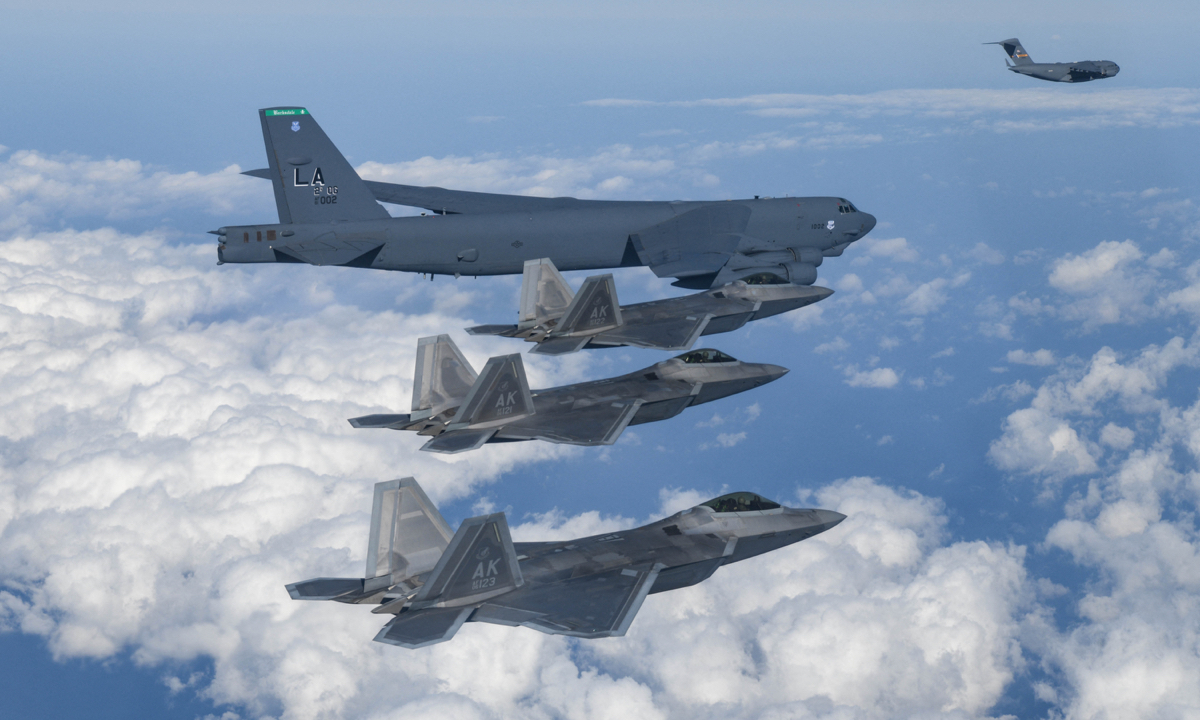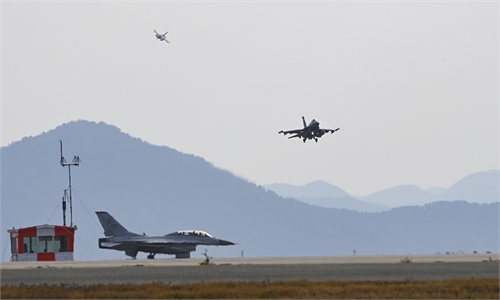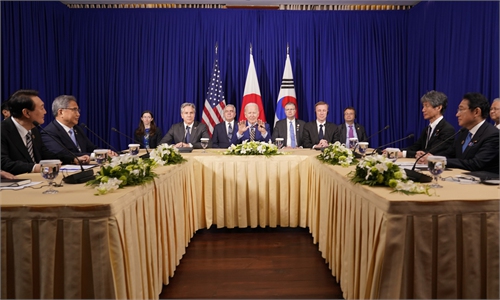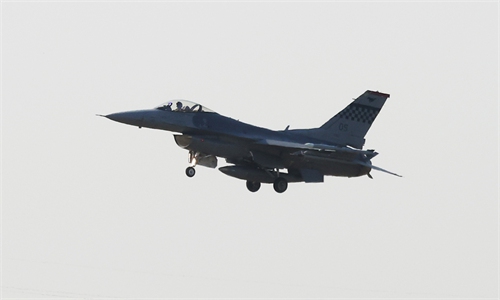US flies bombers in drills with S.Korea, ‘adds fuel’ to tensions on Korean Peninsula

This handout photo taken on December 20, 2022 and provided by South Korean Defence Ministry in Seoul shows a US Air Force B-52H strategic bomber (top center), a US Air Force C-17 cargo aircraft (top right) and three US Air Force F-22 fighter jets flying over South Korea during a joint air drill. Photo: AFP
The US deployed B-52H bomber and F-22 stealth fighter jets for joint military drills with South Korea on Tuesday, a move that Chinese observers said created deterrence to North Korea and add fuel to the "spiral of escalation" of tension on the Korean Peninsula.
According to a statement issued by South Korea's Defense Ministry, Seoul deployed its F-35A stealth jets and F-15K fighters for the air exercises.
"The deployment of the B-52H and F-22 fighters this time is part of an effort to reinforce the credibility of the US' extended deterrence," Yonhap News reported, citing the defense ministry statement.
The US and South Korea have held regular joint military exercises on Korean Peninsula lately while North Korea has also actively been firing missiles and projectiles, which created a situation of "dynamic equilibrium," Song Zhongping, a Chinese military expert and TV commentator, told the Global Times on Wednesday.
North Korea had claimed to have conducted tests on Sunday in preparation for the launch of a military reconnaissance satellite, possibly early 2023, and released two photos of South Korean cities as viewed from space.
South Korea's Joint Chiefs of Staff said it detected that North Korea on Sunday fired two medium-range ballistic missiles from Tongchang-ri areas, South Korean media reported.
Tuesday's US-South Korea exercises marked the first visit by F-22 stealth fighters to South Korea since May 2018. The jets from Kadena Air Base in Japan were deployed to Kunsan Air Base in South Korea this week, Japan's Nikkei Asia reported Wednesday.
On Wednesday, South Korea air force announced the combined air drills set on Thursday, involving America's F-22 stealth fighters, was canceled due to bad weather. Yonhap reported the F-22 jets have returned to their base in Japan.
Song noted the Tuesday drills were a "routine practice" to deter North Korea considering the latter's latest activities, but Pyongyang can hardly be deterred.
The reality is tension on the Korean Peninsula spiraling up and the powder kegs piling up, but danger of an immediate burst is relatively low, Song said. "The US, South Korea as well as Japan are not determined to nor capable of breaking the dangerous equilibrium at the moment."
Therefore, the firmer deterrence the US and South Korea demonstrate, the stronger determination North Korea upholds to accelerate its military development, the expert said.
The tension on the Korean Peninsula is mainly caused by the US, Zhang Jun, China's permanent representative to the United Nations, said in May after the Chinese delegation voted against the draft Security Council resolution tabled by the US that is intended to impose additional sanctions on North Korea.
Since North Korea took denuclearization measures in 2018, the US has failed to respond to Pyongyang's positive measures, failed to address Pyongyang's legitimate and reasonable concerns, and has not shown the due attitude of sincerely resolving the issue, Zhang said.
China hopes all parties will face squarely the crux and history of the Korean Peninsula issue and address each other's concerns in a balanced way, particularly North Korea's legitimate concerns, Chinese Foreign Ministry Spokesperson Mao Ning said at a routine press briefing on December 9.



